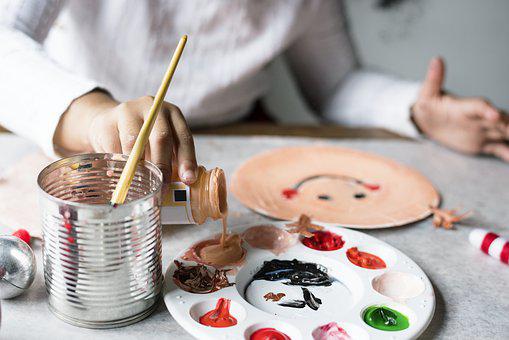Famous Artwork Reproduction Service - Simple exercises for beginners
- Written by News Company

Plastic art breaks out and stretches its branches in many more parts than we would have expected. Besides classical painting in watercolor, plastic art is also enriched with drawings in pencil, graphics, painting on different surfaces and decoration objects, etc. Pencil drawing is perhaps the most stringent technique, considering that precision and attention to detail is on a different level. You can also read the article about tips for drawing art in pencil. If you plan to become a part of a Reproduction Service, you can start by following the simple exercises for beginners listed below.
The most common problems encountered in pencil drawing and correction exercises
The pencil drawing lies at the border between creative flexibility and the mastery of simple techniques to have the most successful pencil works or even sketches for drawing in color. Below are the most common difficulties you encounter and solutions you have when you start pulling on the sheet. See this URL.
Drawing lines, circles and curves
From a vector point of view, it is very likely to create both lines and circles and other perfect geometric figures. When you want to trace your geometric figures with your free hand, you might not get out of the way. Our recommendation is not to use a ruler or other helpful items, as you will not get used to drawing lines.
Technical drawing requires much concentration. To achieve performance, it is advisable to start practicing all sorts of lines and figures until you get to shape as close to the original as possible. Start with short lines, small geometric figures, and simpler drawings. Do not try to have the same length or volume, because you will never succeed and you will have far more frustrations than good. Relax and stay focused on the final result. Do not press too hard on the paper and do not spend much time drawing the lines. You will see that the drawing looks more natural.
Discovering your style
Drawing in pencil is not about copying a landscape or drawing altogether. However, you can click here to see the best reproductions. It is impersonal and, more than that, tough to achieve. You have to remember that the technical drawing is not precise mathematics and in no case a repetition of what has been done before. Let the imagination take control of your work and focus on the final aspect of the work. If you start redesigning a drawing, line by line, a circle with a circle, you risk getting a trivial result. It is essential to identify your own style that will characterize your drawings.
Identify the main elements of the original drawing and put them on the paper in a customized way. Our recommendation is to use geometric figures and lines for each object to draw the picture. Later, add details to fine-tune the image. Still, think about what you want to achieve at the end rather than the perfection of the lines.

Problem with proportions
Translating the objects onto the drawing sheets is a real problem for many beginners in the pencil drawing, and that's because there are two tendencies. Some transpose objects/people in too large sizes, and others in far too large sizes. Moreover, the hardest is to find the right proportions for each purpose that fit into the size of your drawing paper.
Do I have to know how to draw before I can start painting?
Drawing does not have to stop you in your desire to put color on paper. Learning to Draw is a long-lasting practice that requires many exercises, and you want a weekend hobby. So you can draw some light lines before applying color, these will be indicative. Even if you have not made a rigorous sketch, it will be a helper. If you do not like the drawing and you're afraid of it, start applying the color directly to the white paper. Listen to your senses and leave your creativity free!
What Color Types Should I Use?
The types of colors commonly found in the painting are tempera, oil colors, acrylic colors, watercolor. Depending on the waiting time for color drying, reluctance to the strong odor of solvents, you can choose one technique or another. Oil colors are mostly used on a canvas surface. At the same time, it requires special solvents for color dilution and finally for cleaning brushes.
Watercolor is a technique that does not involve an equally substantial investment. Different transparency of colors obtained by diluting with water makes the beauty of watercolor work. A mistake made in the technique of watercolor you can not cover it, which is instantly resolved when you paint in tempera, and you can add a paste over it.
Additional resource: https://www.art-is-fun.com/painting-with-acrylics/
The acrylic colors have the intensity, the support to be applied can be canvas, cardboard, wood, dry quickly and are water soluble.
If you are at first in the art of painting, the recommendation is to start with tempera. Choose to paint on paper. Color dissolving will be done with water. You can apply thinner or thicker, transparent or opaque layers. Color drying time is a short and, crucial, you can easily mask mistakes.











